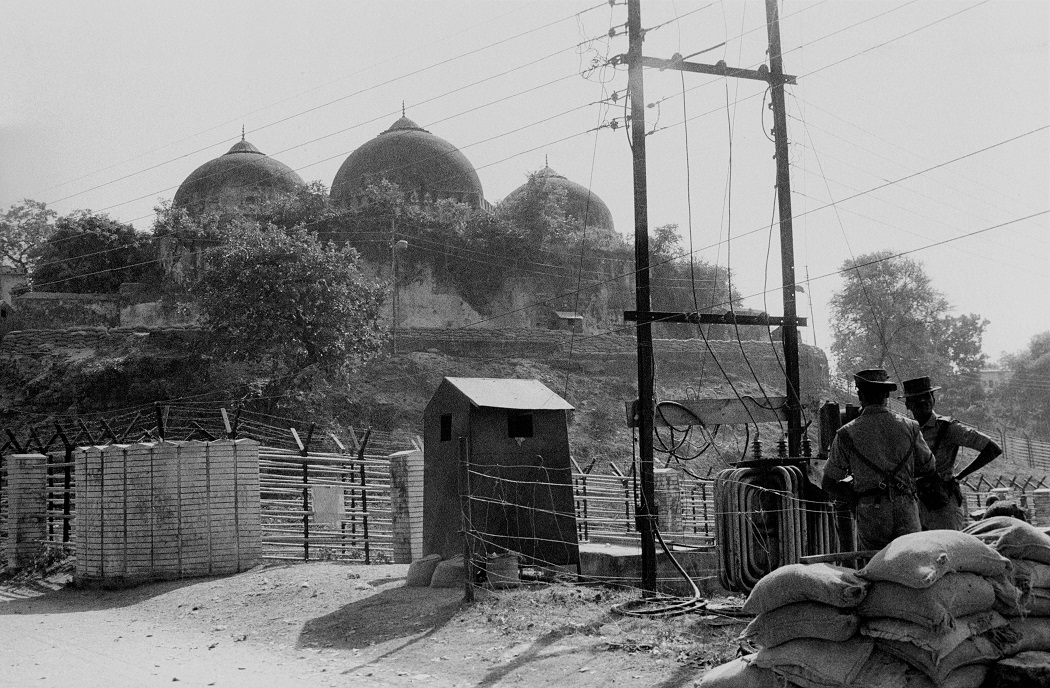
How the legal battle to acquire Ayodhya land panned out over the years

The prolonged battle for the 2.77-acre piece of land of the Ram Janmabhoomi-Babri Masjid in Ayodhya, the bone of contention between the two communities for almost two centuries, took an ugly turn in 1992 when the Babri Masjid, believed to be built by Mughal emperor Babar in the 16th century on the contentious piece of land, was demolished by right-wing fringe activists. However, the cases in the court by the two communities, claiming the land to be their date back to the 19th century. Four prominent petitions play an important part in the case that is slated to be wrapped up today.
Early roots
The first-ever suit pertaining to the Ram Janmabhoomi-Babri Masjid case was filed in 1885 by Mahanth Raghubar Das against the secretary of state for India in council. In his petition Das sought for the construction of a temple for Lord Ram at Ayodhya.
Even though the trial court seconded Das’ arguments, it declined to grant permission for building of any temple on the site, citing fear of communal riots.
The petitioner had stated that the existing mosque (Babri Masjid) was built after demolishing a Ram mandir.
Das had the approached the Faizabad district court, which dismissed his application. “It is most unfortunate that a masjid should have been built on land specially held sacred by the Hindus, but as that event occurred 356 years ago it is too late now to remedy the grievance. All that can be done is to maintain the parties in status quo,” the judge of the Faizabad district court had said.
A turning point after Independence
In December 1949, the Faizabad city magistrate attached the property under Section 145 of the Code of Criminal Procedure (CrPC) and handed over the site to the then municipal board chairman Priya Datt Ram after the then district magistrate of Faizabad KK Nayar in a report confirmed that a crowd of 50 to 60 people had installed idols of Sri Ram after breaking into the mosque on December 23. It was the last time Muslims offered prayers in the mosque, although the magistrate allowed Hindus to occasionally perform religious ceremonies where the idol were placed.
The first suit, 1950
Close on the heels of the incident, on January 16, 1950 a devotee named Gopal Singh Visharad filed the first Ayodhya suit, praying the court to be allowed to go near the idols of Sri Bhagwan Ram Chandra to offer prayers without any interference from the Uttar Pradesh government. He also sought prohibitory injunction against defendants, including the executive magistrate, the Uttar Pradesh Sunni Board and a few Muslim residents who were quoted as representatives of the Muslim community in Ayodhya.
Visharad was substituted by his son Rajendra Singh in 1986 after his death.
Nirmohi Akhara stakes claim, 1959
The second suit was filed by the then Mahant of Nirmohi Akhara in 1959. The petitioner claimed that the land in question belonged to the Nirmohi Akhara, which earlier was an ancient school of maths and akhara (gymnasium) of Ramanandi Varagis.
The petition stated that the akhara owned the inner courtyard and constructed parts of the temple where only Hindus were allowed. The petitioner said that the akhara was deprived of the management of the temple due to wrongful attachment of the property by the magistrate under Section 145 CrPC.
Muslim Waqf Board files petition, 1961
In 1961, the UP Sunni Central Waqf Board along with nine other Muslims of Ayodhya filed a suit where primary petitioner GS Visharad, Nirmohi Akhara, Faizabad magistrate and the Uttar Pradesh government were named as defendants.
The petition said that the mosque in Ayodhya dates back to the time of Mughal emperor Babar 433 years ago and that Muslims had been praying at the place ever since.
The petitioner prayed the court to order repossession of the mosque by the Muslims after removal of the Hindu idols.
The deity moves court, 1989
The fourth suit was filed in 1989 by senior advocate Deoki Nandan Agarwala, on behalf of Bhagawan Sri Ram Birajman, the deity of the Asthan Sri Ram Janmabhoomi at Ayodhya. It was filed soon after the mosque was opened for Hindus to offer worship on orders of the civil judge of Faizabad, based on an application filed by a devotee. The entry of Hindu devotees had sparked communal tensions in the city.
The deity and the birthplace were stated to be juristic persons in the plaint.
The petition prayed for a decree of declaration to the effect that the entire premises of the Sri Ram Janmabhoomi at Ayodhya belonged to the deity, requesting for a perpetual injunction against the defendants prohibiting them from interfering with or raising any objection to or placing any obstruction in the construction of the new temple building at Sri Ram Janmabhoomi Ayodhya after demolishing and removing the existing structure.
The Supreme Court consolidated the suits and referred it to the Allahabad High Court, which in turn in its September 30, 2010 ruling divided the land into three parts, to be divided between the deity, the Waqf board and the Nirmohi Akhara.
However, in December 2010, the Akhil Bharatiya Hindu Mahasabha and Sunni Waqf Board moved the apex court challenging the verdict. The Supreme Court in 2011 stayed the high court order, imposing a status quo. A five-judge Constitution bench headed by Chief Justice of India Ranjan Gogoi, began hearing the case on August 6, 2019 after mediations between the parties failed. The court reserved its verdict on October 16 after a 40-day long marathon hearing.

